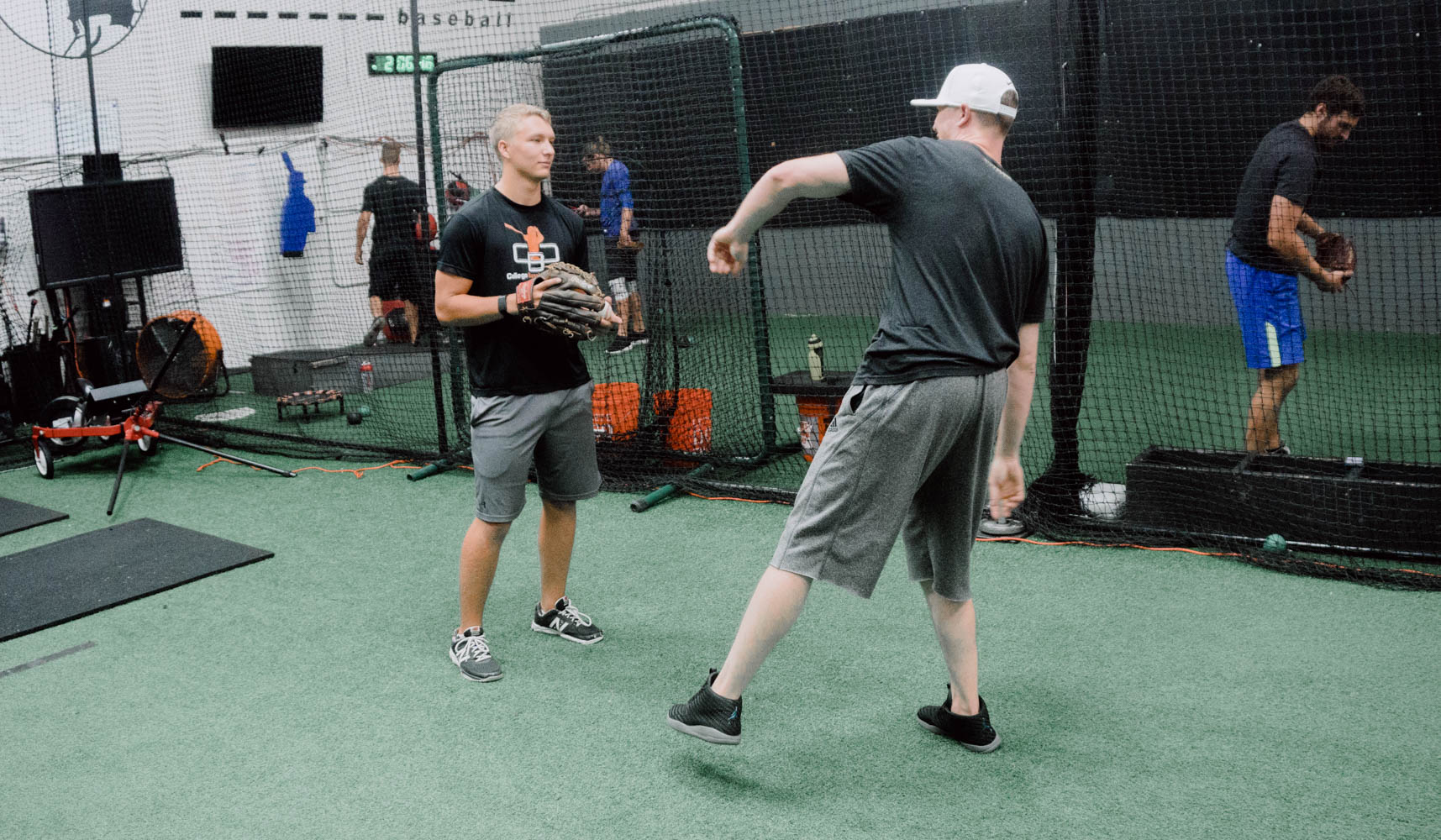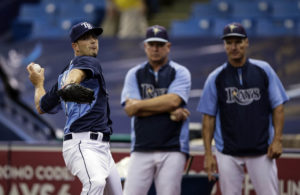How to Fix Bad Baseball Throwing Mechanics Efficiently

Recently someone asked me a question that I get fairly frequently, essentially asking how to fix bad baseball throwing mechanics.
I see a lot of strength, conditioning, and training videos and articles on your site, but not a lot about mechanics. Do you teach mechanics in your MaxVelo program?
I have mixed reactions to questions along these lines – one being confusion; certainly I’ve written quite a bit about pitching mechanics on this site – some of our more popular articles are:
- Elbow Injuries and What Causes Them (bonus Stephen Strasburg content)
- Strasburg, The Inverted W, and Pitching Mechanics
- Reviewing the NPA Velocity “Holds”
- Disconnected Pitching Mechanics – A Good Thing?
Additionally, there may not be another person or organization out there that pushes the boundaries of cost-effective and applicable motion capture out there more than Driveline Baseball. We utilize our lab to review, analyze, and adjust the pitching mechanics of our clients.
However, I don’t think the conception is all that unwarranted. Most of our pages don’t mention mechanical adjustments, or if they do, they’re not direct changes that most pitching coaches talk about. And there’s a very good reason for that – we don’t believe in forcibly changing the pitching mechanics of our pitchers based on un-researched “fundamentals”. To us, that’s an outdated model that doesn’t have very high transfer or applicability. Let’s talk about that last point a bit more.
“See This? Do That.”: Why Most Pitching Mechanics Advice is Stupid
Most pitching coaches out there today fall into a few buckets:
- Don’t use video, just coach based on “pitching fundamentals” that they heard their coaches tell them
- Don’t use video, but use cues they heard about on the Internet
- Do use low-quality (24-30 FPS) video, but just to replay the pitcher’s mechanics without much added insight
- Do use low-quality video and compare the pitcher to the pitching mechanics video of a professional pitcher
The first three categories of pitching coaches are totally useless, so if that accurately describes your coach, we highly recommend you join our remote training program (we won’t sit on a bucket and yell cues at you).
Remember, the shoulder is internally rotating at 7000 degrees/sec in the 90+ MPH delivery, so to not even use crappy iPad video says that the coach is completely giving up on truly understanding how you throw a baseball.
The last category is one that the “good” pitching coaches fall into. Oftentimes, these coaches pay for expensive programs like Right View Pro to compare an amateur pitcher’s mechanics with a professional pitcher’s mechanics, and take the approach of “See This? Do That.” They might pair a three-quarters right-handed pitcher with a neutral spine alongside someone like Roger Clemens or Greg Maddux and tell them to look more like them, or they might take a high three-quarters / overhead right-handed pitcher with spinal tilt and compare him to Tim Lincecum and tell them to do what he does.
We don’t do any of that, and we never will – we did that for 4 years with very little success. If an athlete was capable of looking like Clemens, Maddux, or Lincecum just by watching video of themselves and internalizing the changes they need to make to achieve those motions, they wouldn’t need outside help. Sure, you’ll run into the occasional athlete that this approach works on, but chances are very good they would have succeeded due to obviously pre-existing high kinesthetic feel.
That’s not to say that we don’t try to change someone’s pitching mechanics. We do. Here’s how we’ve found the most success in doing so, and why our results have been so good over the last 2 years of using this system.
How to Fix Bad Baseball Throwing Mechanics
We strongly believe that without high-speed video, you cannot be an effective pitching coach. Things are happening too quickly in the pitching delivery to simply eyeball or even use standard camcorder-quality video – especially when it comes to elite athletes. Sure, there may be glaring flaws that can be fixed in younger athletes, but if you plan on working with elite high school, college, and pro athletes (or getting your guys to that level), you’ll need better insights on what you’re trying to see.
But just knowing what you want to change isn’t enough. An elite athlete doesn’t learn how to throw 95+ MPH without some sort of “feel.” He doesn’t get there by checking off a bunch of things off a list, and he can’t respond to simply telling him what he should or should not do better. So how do you effect the change you want to see?
Fix Bad Baseball Throwing Mechanics with Weighted Balls
Using weighted baseballs is a cornerstone of our program, but not necessarily in the way that everyone thinks. Yes, we are simply uncorking them and letting them fly sometimes:
Player’s shouldn’t throw high intent just whenever they want, that’s a very bad idea. You can check out our blog on off-season throwing programs to see how we implement velocity days to meet an athlete’s goals.
But their benefit is not simply just a physiological stimulus, but also one that helps to subtly alter pitching mechanics through active and passive methods.
Active Methods
We use two Stalker radar gun to measure all of the weighted balls and Plyo Ball ® that are thrown by our athletes with the intention of changing their programs or addressing specific needs that come up as a result. Without divulging the secret formula, if a pitcher throws overload (7-11 oz) balls or underload balls (2-4 oz) in drastic deviations away from a regulation baseball (5 oz), then I know that there’s a constraint in his arm action, ball release phase, or intent to throw the ball. By monitoring these differences, I will switch the athlete to a more appropriate weighted baseball routine and/or mobility circuit as well as different cues to focus on.
Passive Methods
Weighted balls can change a pitcher’s mechanics by simply being thrown. Research shows that weighted implements beyond 20% of the regulation weight cause significant changes in biomechanics – this is often trotted out there by anti-weighted ball advocates as being bad – and this can be a very positive thing. Think of it this way – if weighted baseballs changing someone’s mechanics is such a bad thing, why do the pitching coaches who say this then immediately try to change your pitching mechanics using only their intuition?
So, do we “teach” pitching mechanics?
I don’t know, to be honest. Yes, we do, but not in the way that most pitching coaches out there do – and that will never change.
Changing an athlete’s pitching mechanics is much more of a guided process, where the goal is described by the trainer and the athlete works hard daily to achieve it.
Properly designed drills, movement patterns, and equipment will get the best movement patterns out of your athletes when combined with solid coaching, deep analysis (high-speed video), and proper cueing.
Want to Know More About Using Weighted Implements to Develop Good Mechanics?
Comment section
Add a Comment
You must be logged in to post a comment.


InsdieMan -
So what do you do with the video?
Jimmy -
Hey Kyle,
Great post. What camera would you recommend to a travel team coach?
Thanks for your time,
Jimmy
drivelinekyle -
Jimmy:
I’ve been recommending this one:
https://www.amazon.com/gp/product/B0085ME7A4/ref=as_li_ss_tl?ie=UTF8&camp=1789&creative=390957&creativeASIN=B0085ME7A4&linkCode=as2&tag=drivelmechan-20
Jimmy -
Thanks Kyle.
drivelinekyle -
Constantly analyze, test/re-test, and assign new drills and training methods based on it.
Mike O'Connor -
Would you recommend a middle infielder to play catch with a weighted ball before practice or long toss to clean up arm path a little bit then?
[email protected] -
Depends on age, we don’t recommend athletes throw weighted balls until they’re in high school. But weighted ball catch play is something that we encourage (up to about 90 feet) and you can read more about it in our free 8-week ebook. May of the Met’s position players use weighted balls to warm up pre-game.
Long toss would be great to introduce pre-game!